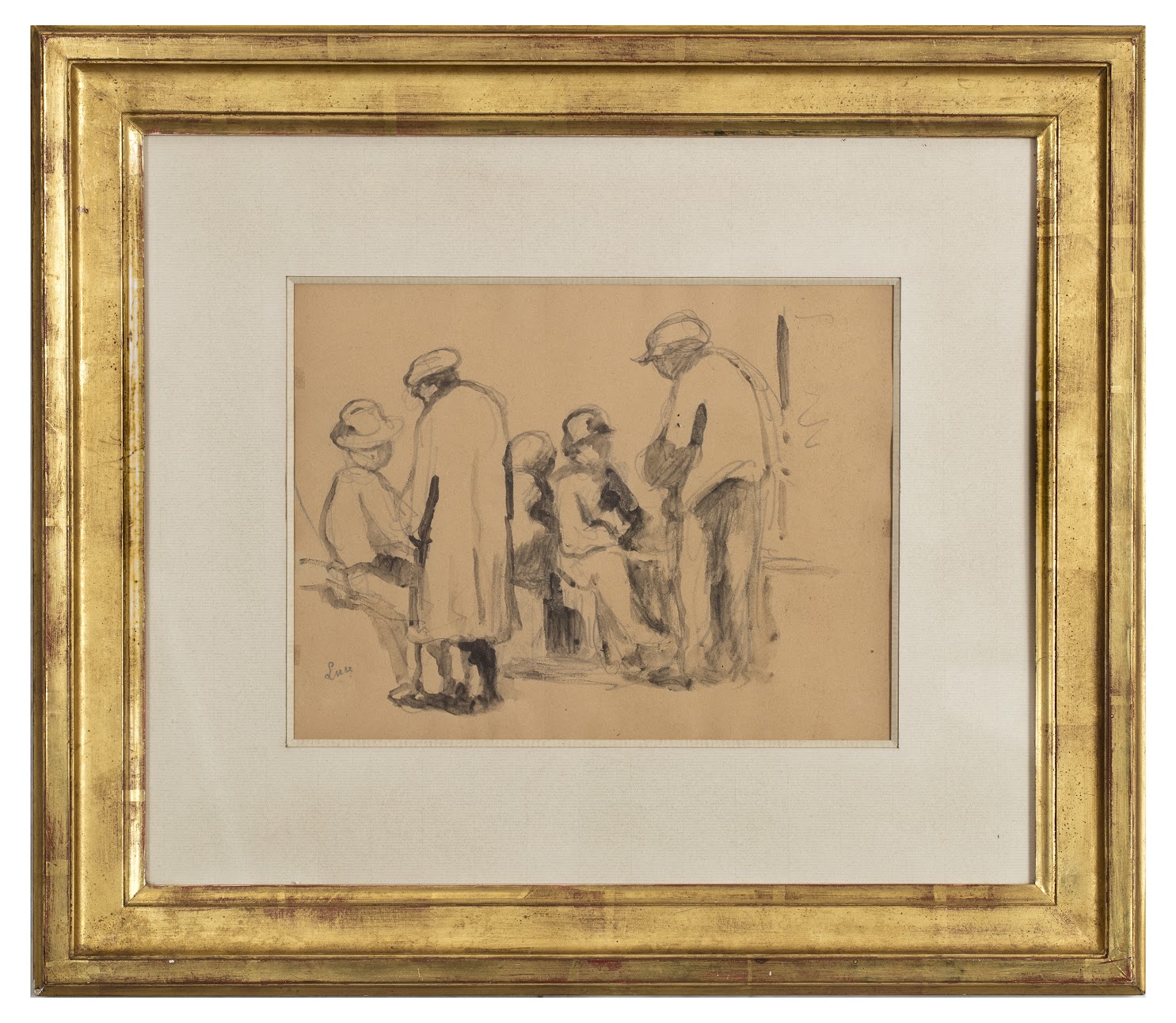Maximilien Luce was a French painter born in Paris in 1858.
While he came from a modest family, Maximilien grew up in an environment that valued art and culture. As a result in 1870, he took drawing classes at the École des arts décoratifs of Paris.
In 1872, Luce began an apprenticeship in wood engraving in the workshop of Henri Théophile Hildibrand and attended evening classes at the drawing school on Rue de Vaugirard. By 1876, he became an engraver at Eugène Froment’s workshop and attended the Académie Suisse, where he created his first known painting, “Jardin à Montrouge.” In 1879, he was drafted into the 48th infantry regiment, but thanks to the intervention of his mentor Carolus-Duran, he was able to resume his artistic activities in 1881.
During the 1880s, Luce discovered neo-impressionism through encounters with Georges Seurat and Paul Signac, who influenced his technique and approach. In 1887, he exhibited at the Salon des Indépendants and met other important figures of the movement, such as Camille Pissarro. His works from this period, often characterized by dark colors and a tight brushstroke, focused on suburban landscapes.
From 1895 onwards, Luce spent several periods in Belgium, where he was captivated by the industrial environment and the landscapes of Charleroi. This experience inspired him to create a series of powerful works that testify to the beauty and harsh reality of the working world. He gradually distanced himself from divisionism to adopt a freer style, seeking to better express the strength of human effort.
At the turn of the century, Luce focused on the construction sites of Paris, capturing the transformation of the city with an impressionistic approach, emphasizing the geometry of scaffolding and the work of laborers. His works, such as “Les Batteurs de pieux” and “Les Terrassiers,” pay tribute to the dignity and collective effort of workers.
From 1920 onwards, Luce settled in Rolleboise, where his style evolved towards more serene themes, reconnecting with nature and bucolic landscapes. He continued to paint until the end of his life, capturing scenes of daily life.
Maximilien Luce passed away on February 7, 1941, in Paris. His work reflects his political commitment, technical explorations, and ability to represent the lives of the humble and working class through a rich and vibrant palette.

Sign up to the newsletter and stay informed about our latest acquisitions and exhibitions:
© Galerie Rousset 2023